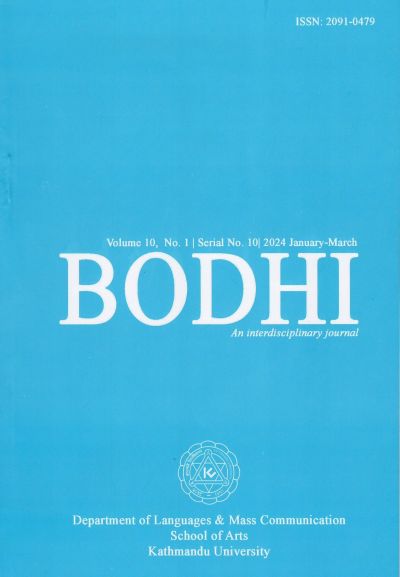Revisiting Representation in South Asian Modernity
DOI:
https://doi.org/10.3126/bodhi.v10i1.66935Keywords:
Modernity, South Asia, postcoloniality, representation, critiqueAbstract
South Asian modernity critiques colonial representation through recreation and rewriting and develops a new way of dealing with the colonial discourses of the past. The colonial rulers employed violence to establish their domination upon narratives to rule the people of India. After its Independence in 1947, historians, literary critics, and academicians began to approach the colonial past from the domains of their expertise to explore the wrongs committed therein. Such intellectuals sift through the established discourses of the empires to examine the methodological validity of their claims by turning the lens upon Eurocentrism itself. This study critically surveys studies by Dipesh Chakrabarty, Gyan Prakash, Gayatri Chakraborty Spivak, and Partha Chatterjee to examine the issues they have raised about India and its colonial past. Deriving the critical insights from the studies, I interpret two texts by English novelist, short story writer and poet Rudyard Kipling (1865-1936)—the short story “The Other Man” (1886) and the poem “Gunga Din” (1890). These texts depict the colonized subject at the service of the colonial master. By analyzing two cases from Kipling, this study concludes that South Asian modernity faces the unique challenge of revisiting representation in the context of its colonial past.
Downloads
Downloads
Published
How to Cite
Issue
Section
License
© Department of Languages and Mass Communication, School of Arts, Kathmandu University, Nepal




